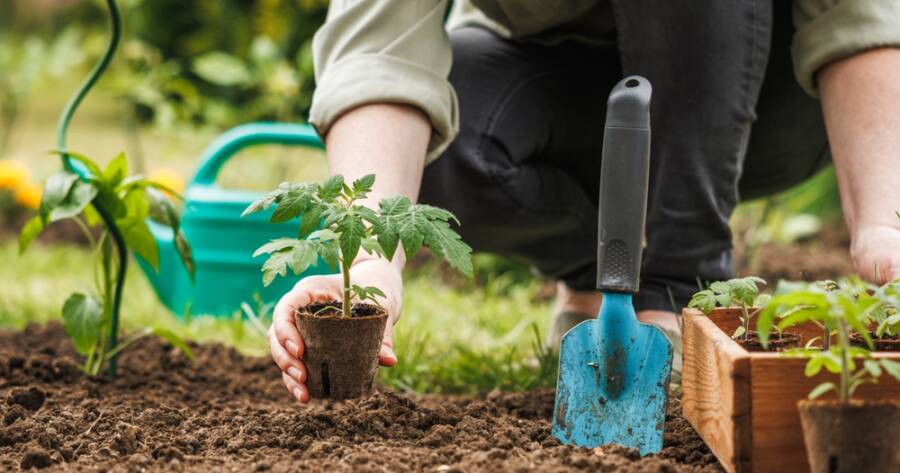Gardening can be relaxing and rewarding, but not every gardener has hours to devote each week. A low-maintenance garden allows plants to flourish while minimizing effort and stress. Thoughtful planning, smart plant selection, and simple upkeep routines make it possible to enjoy beauty and productivity without constant labor. With intentional design and sustainable practices, a thriving garden can become a space for enjoyment, creativity, and connection with nature, all while keeping time and effort under control.
Choose Plants That Fit Your Climate
Selecting plants suited to your local climate reduces the need for constant care. Native plants are adapted to seasonal conditions, soil types, and rainfall patterns, making them naturally resilient. Drought-tolerant species require less watering, while perennials return year after year with minimal intervention.
Understanding sun and shade requirements for each plant ensures they thrive where they are planted. Mixing native and adaptable species reduces pest issues and increases garden longevity. By matching plants to their environment, gardeners can enjoy vibrant growth without the frustration of constant replacements or special treatments.
Simplify Garden Layout and Design
A well-planned layout makes maintenance easier and reduces labor over time. Grouping plants by water and sunlight needs allows efficient watering and care. Incorporating raised beds, pathways, and mulch helps prevent weeds and simplifies access for pruning or harvesting.
Minimalist design principles can enhance beauty while limiting upkeep. Using layers—such as groundcovers, shrubs, and small trees—creates visual interest with fewer plants to manage. Thoughtful spacing ensures proper airflow and reduces disease risk. A simplified layout saves time while keeping the garden organized, attractive, and healthy.
Use Mulch and Groundcover Wisely
Mulching helps retain soil moisture, regulate temperature, and prevent weeds. Organic options like bark, straw, or compost break down naturally, adding nutrients to the soil. Mulch reduces watering frequency and decreases the need for constant weeding, allowing plants to grow more robustly with less attention. Layering mulch around shrubs and flower beds also protects roots from extreme temperatures.
Groundcover plants, such as creeping thyme or clover, offer similar benefits while adding texture and color. They suppress weeds and protect soil from erosion. Incorporating flowering groundcovers can also attract pollinators, increasing biodiversity in the garden. By combining mulch and low-growing groundcover strategically, gardeners can maintain soil health, conserve water, and create a lush, thriving garden with minimal effort and maximum visual appeal.
Implement Efficient Watering Systems
Smart watering is key to a low-maintenance garden. Drip irrigation or soaker hoses deliver water directly to roots, reducing waste and keeping foliage dry, which helps prevent disease. Timers make watering predictable and hands-off, freeing time for other tasks. Mulching around irrigation lines can further reduce evaporation and increase efficiency.
Watering early in the morning ensures maximum absorption and minimizes evaporation. Rain barrels or other water-saving strategies can further reduce dependence on manual watering. Grouping plants with similar water needs together avoids over- or under-watering. Efficient water management supports plant health, encourages deep root growth, and keeps the garden vibrant with less ongoing effort. Even a few smart adjustments can dramatically reduce daily maintenance.
Schedule Simple Seasonal Tasks
Even a low-maintenance garden benefits from occasional seasonal attention. Pruning, deadheading, and cleaning beds once or twice a season helps plants stay healthy and promotes flowering. Checking for pests and disease early prevents larger problems later. Seasonal fertilizing or composting can also boost growth without adding extra work throughout the year.
Creating a calendar for seasonal tasks ensures that maintenance remains manageable and predictable. A few well-timed actions each year can preserve soil health, plant vitality, and visual appeal. Keeping seasonal upkeep straightforward supports a thriving garden while minimizing stress and labor. Even gardeners with limited time can enjoy lush, attractive gardens by focusing on a few key actions per season.
Enjoy a Garden That Works With You
A low-maintenance garden combines thoughtful planning, smart plant selection, and efficient care strategies. By working with nature rather than against it, gardeners can enjoy color, growth, and productivity without constant effort. This approach creates more time to simply relax and appreciate the garden’s beauty.
Intentional design encourages a deeper connection to the outdoor space, promoting relaxation, creativity, and well-being. With easy routines and a focus on sustainable choices, a thriving garden becomes a source of pride and joy. Investing effort upfront ensures long-term rewards, allowing plants to flourish while giving gardeners freedom to enjoy their space without stress or constant upkeep.

